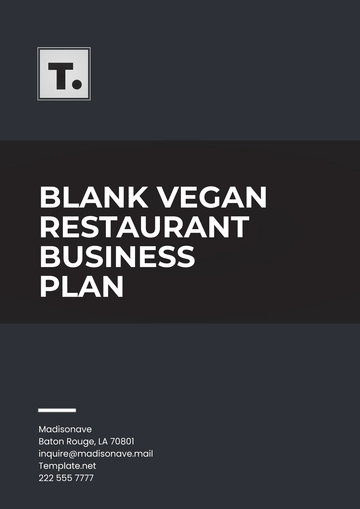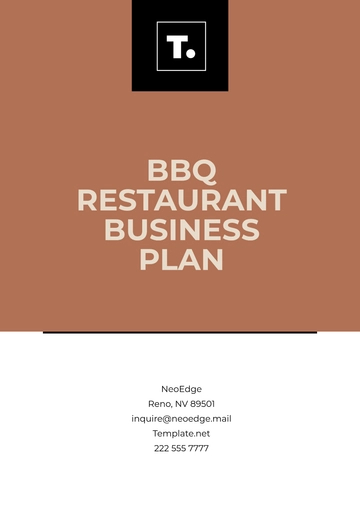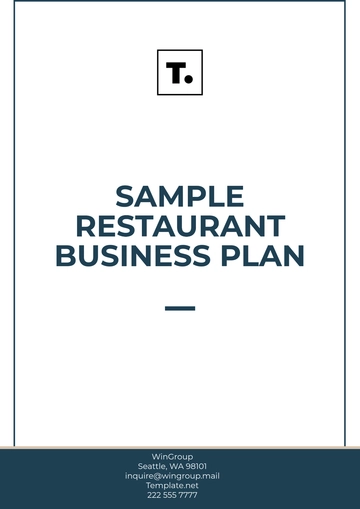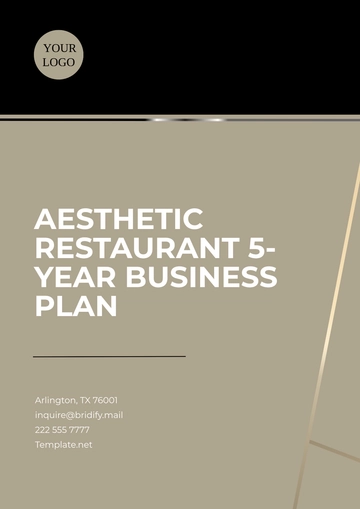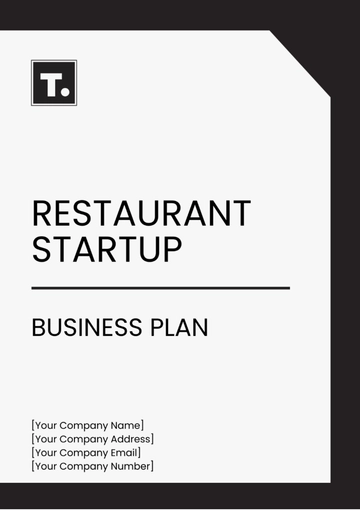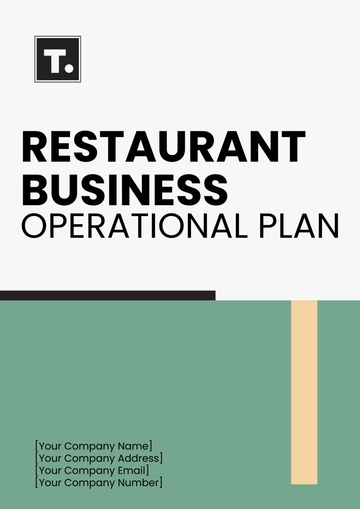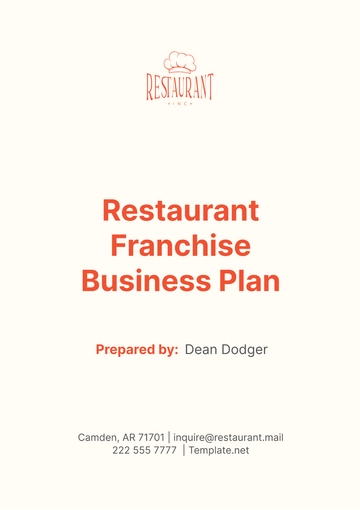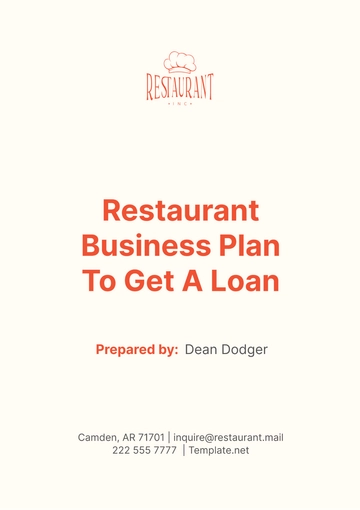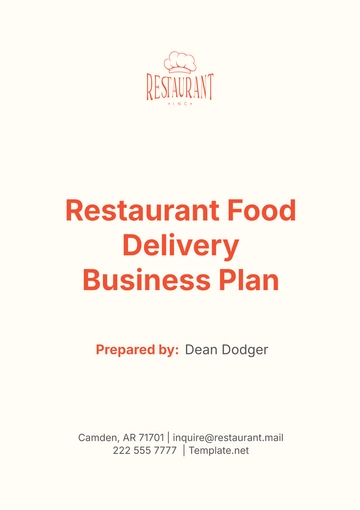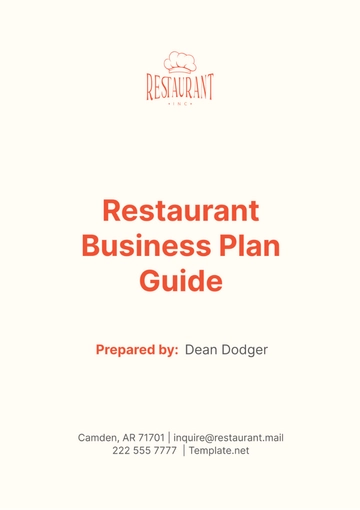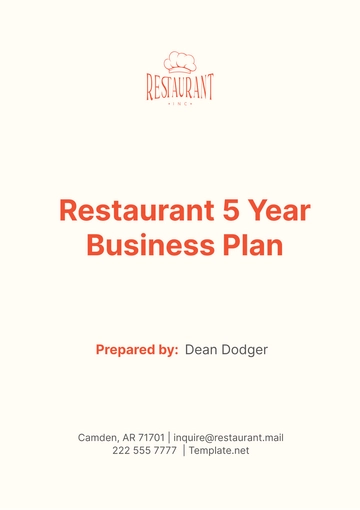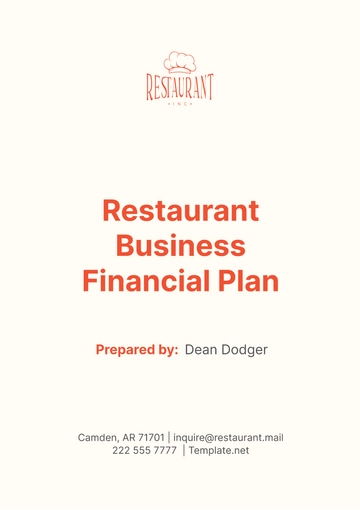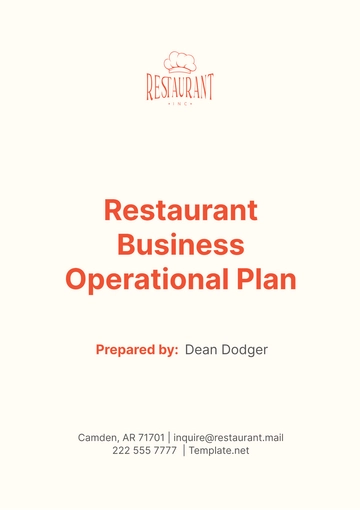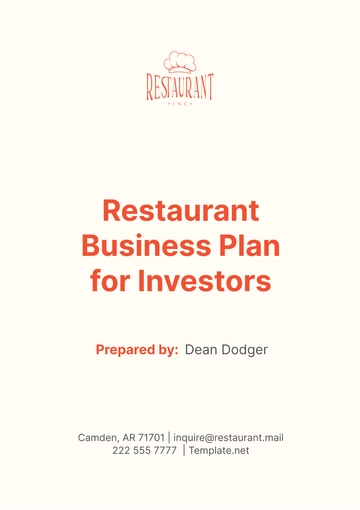Free New Restaurant Business Plan

Executive Summary
The restaurant industry continues to thrive in 2050, with growing demand for unique, health-conscious, and immersive culinary experiences. This business plan outlines the creation of a forward-thinking restaurant that will specialize in fusion cuisine, combining traditional flavors with modern techniques and sustainable ingredients. Strategically located in a bustling urban center, the restaurant will cater to a diverse clientele, from the corporate lunch crowd to evening diners seeking memorable dining experiences. By blending innovative cuisine with exceptional service, the restaurant aims to become a landmark dining destination.
Business Objectives
Achieve profitability within the first 12 months of operation.
Dominate the local dining scene with fusion cuisine.
Cultivate loyal customers with exceptional food and service.
Market Analysis
The dining landscape in 2050 has evolved significantly, but there is still a considerable gap for fusion cuisine that blends traditional methods with contemporary flavors. Health-conscious dining, environmental sustainability, and social dining experiences are key trends. This analysis highlights customer demographics, competition, and the market trends that will influence the restaurant’s success.
Target Market
Young professionals aged 25-45 seeking innovative dining experiences.
Couples and families who want unique culinary options for special occasions.
Corporate clients looking for a premium venue for business lunches, dinners, and events.
Competitive Analysis
While the local market includes several high-end dining establishments, none offer the distinctive fusion cuisine that this restaurant will deliver. This allows the opportunity to carve out a niche and attract customers seeking a novel gastronomic adventure.
Market Trends
Sustainability and health: Customers are more health-conscious, seeking restaurants that offer organic, locally sourced ingredients and plant-based options.
Fusion cuisine: The blend of diverse culinary traditions continues to gain popularity as customers look for adventurous, cross-cultural experiences.
Dining as entertainment: Social dining, where the experience itself is as important as the food, has become a mainstream trend, with customers seeking atmospheres that are both relaxing and exciting.
Marketing Strategy
Branding and Positioning
The restaurant will be positioned as an innovative, contemporary dining destination, known for its forward-thinking fusion menu and commitment to sustainability. Its brand will emphasize a refined yet casual atmosphere, making it the go-to location for both everyday meals and special occasions.
Promotion and Advertising
Method | Description |
|---|---|
Social Media | Use platforms like Instagram, TikTok, and emerging social networks for visual promotions, engaging with customers, and showcasing the dining experience. |
Email Marketing | Send regular newsletters highlighting new dishes, special events, and exclusive offers to a growing email list. |
Local and Digital Advertising | Invest in targeted digital ads and maintain a presence in local lifestyle publications and community events. |
The marketing strategy will also focus on collaborations with influencers and food bloggers to create buzz around the opening and subsequent events.
Operations Plan
Location and Facilities
The restaurant will be situated in the downtown area, offering a prime location with high foot traffic and easy access by public and private transportation. The interior will feature a modern, eco-friendly design with cutting-edge kitchen equipment specifically suited for the preparation of fusion cuisine.
Operational Workflow
The restaurant will follow a streamlined operational workflow, including:
Inventory Management: Digital tracking systems for real-time monitoring of stock levels and supply chain efficiency.
Food Preparation: Advanced kitchen technologies and sustainable cooking methods to ensure high-quality, consistent meals.
Customer Service: Comprehensive training for all staff to provide excellent service and uphold the restaurant’s brand standards.
Financial Plan
Startup Costs
Item | Cost ($) |
|---|---|
Lease Deposit | 50,000 |
Renovations | 50,000 |
Kitchen Equipment | 60,000 |
Furniture and Decor | 30,000 |
Marketing and Advertising | 15,000 |
Initial Inventory | 25,000 |
Working Capital | 40,000 |
Total | 270,000 |
The startup costs include a substantial investment in renovations, kitchen technology, and decor to ensure the restaurant is not only modern but also aligned with the eco-conscious preferences of 2050 consumers.
Revenue Projections
The financial projections are based on serving an average of 100 customers per day with an estimated average spending of $35 per person. This provides an estimated annual revenue of $1,277,500 in the first year, with growth expected in subsequent years as the restaurant solidifies its market position and attracts repeat customers.
- 100% Customizable, free editor
- Access 1 Million+ Templates, photo’s & graphics
- Download or share as a template
- Click and replace photos, graphics, text, backgrounds
- Resize, crop, AI write & more
- Access advanced editor
Launch your culinary venture with Template.net's New Restaurant Business Plan Template. This fully editable and customizable template provides a professional layout for outlining your restaurant's concept, target market, menu offerings, and financial projections. Accessible in our AI Editor Tool, it’s designed to help you create a solid plan for success in the competitive food industry.
You may also like
- One Page Business Plan
- Coffee Shop Business Plan
- Restaurant Business Plan
- Food Business Plan
- Real Estate Business Plan
- Executive Summary Business Plan
- Cover Page Business Plan
- Nonprofit Business Plan
- Daycare Business Plan
- Construction Business Plan
- Startup Business Plan
- Medical Business Plan
- Bakery Business Plan
- Service Plan
- Hotel Business Plan
- Catering Business Plan
- School Business Plan
- Healthcare Business Plan
- Transportation Plan
- Sports Plan
- Car Wash Business Plan
- Salon Business Plan
- Clothing Business Plan
- Farming Business Plan
- Boutique Plan
